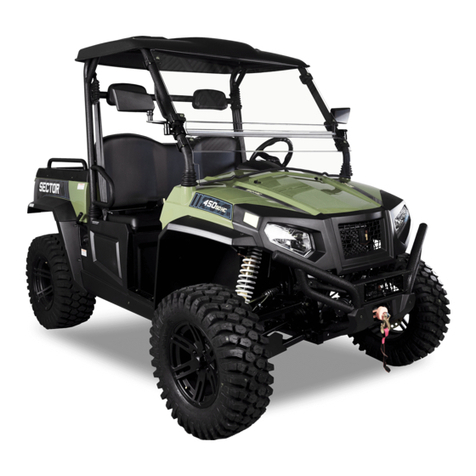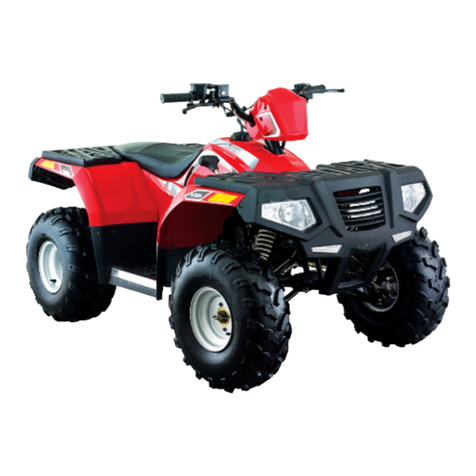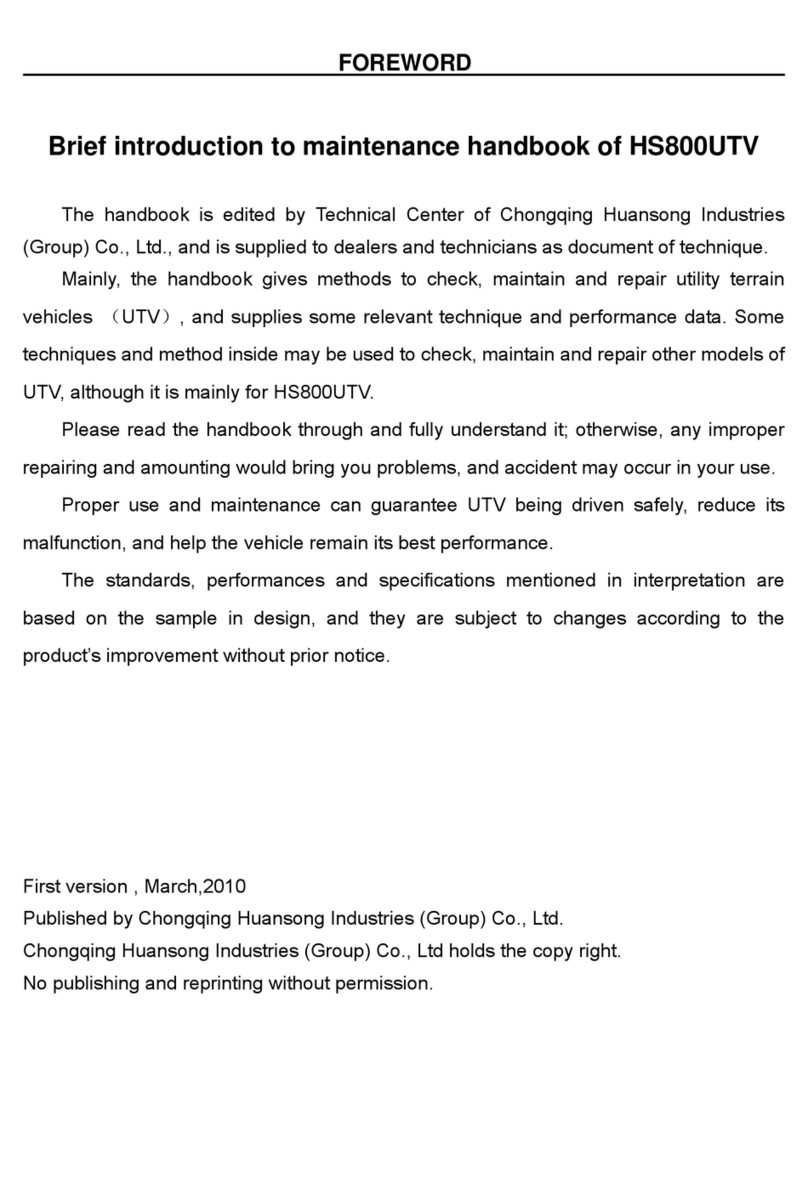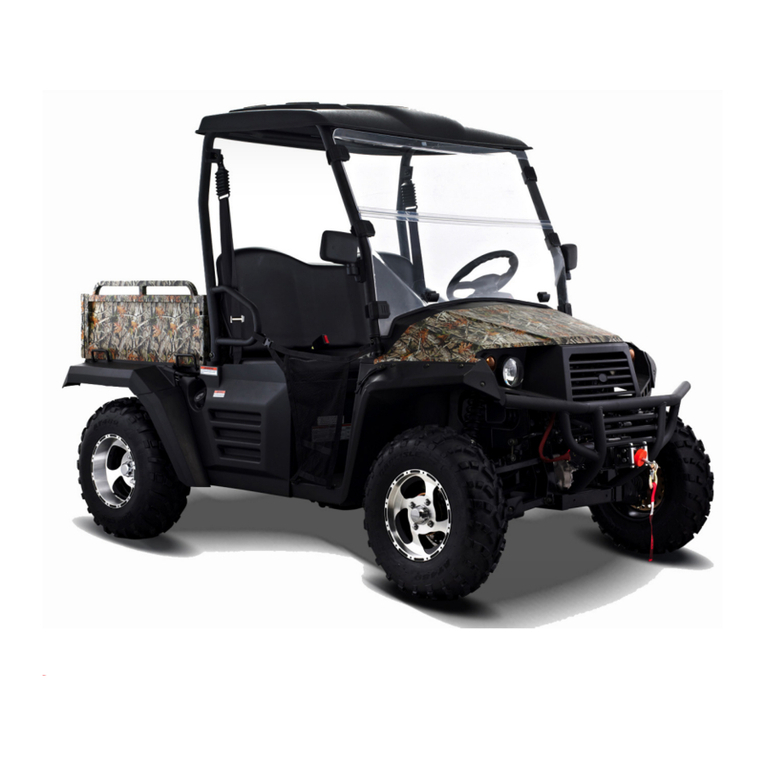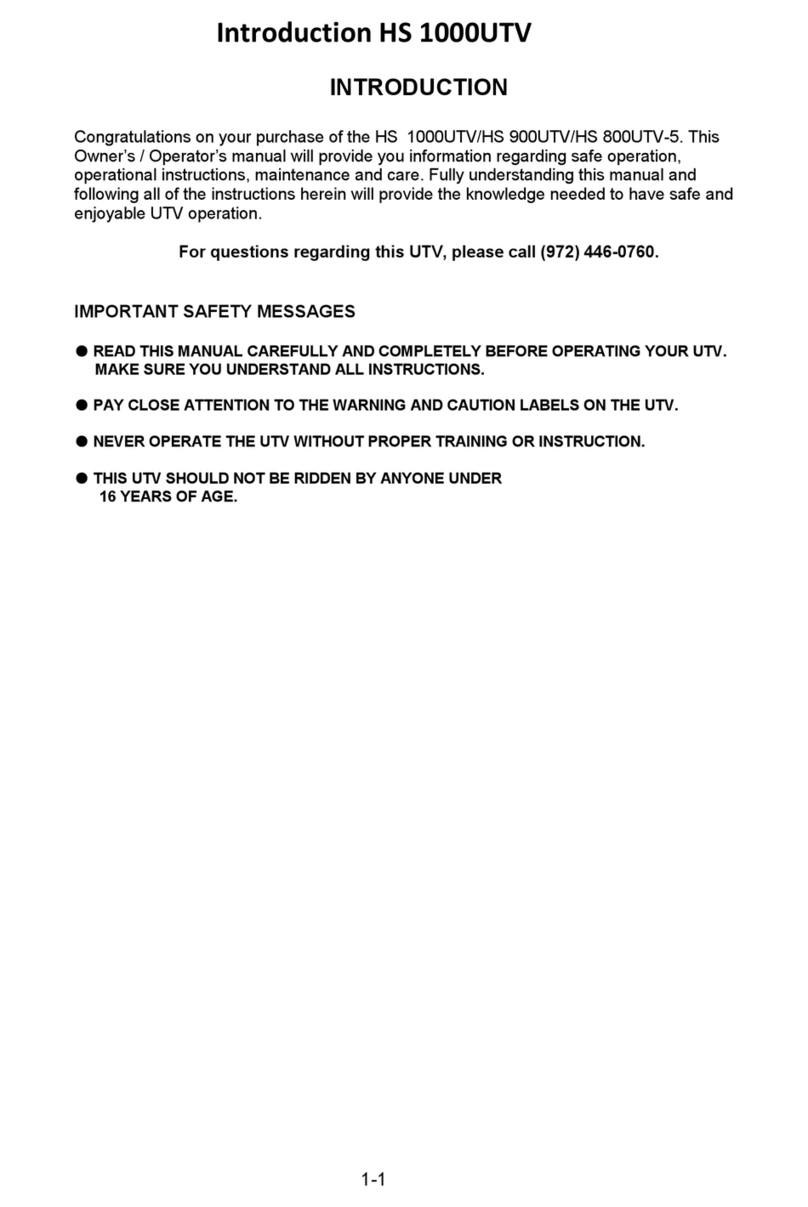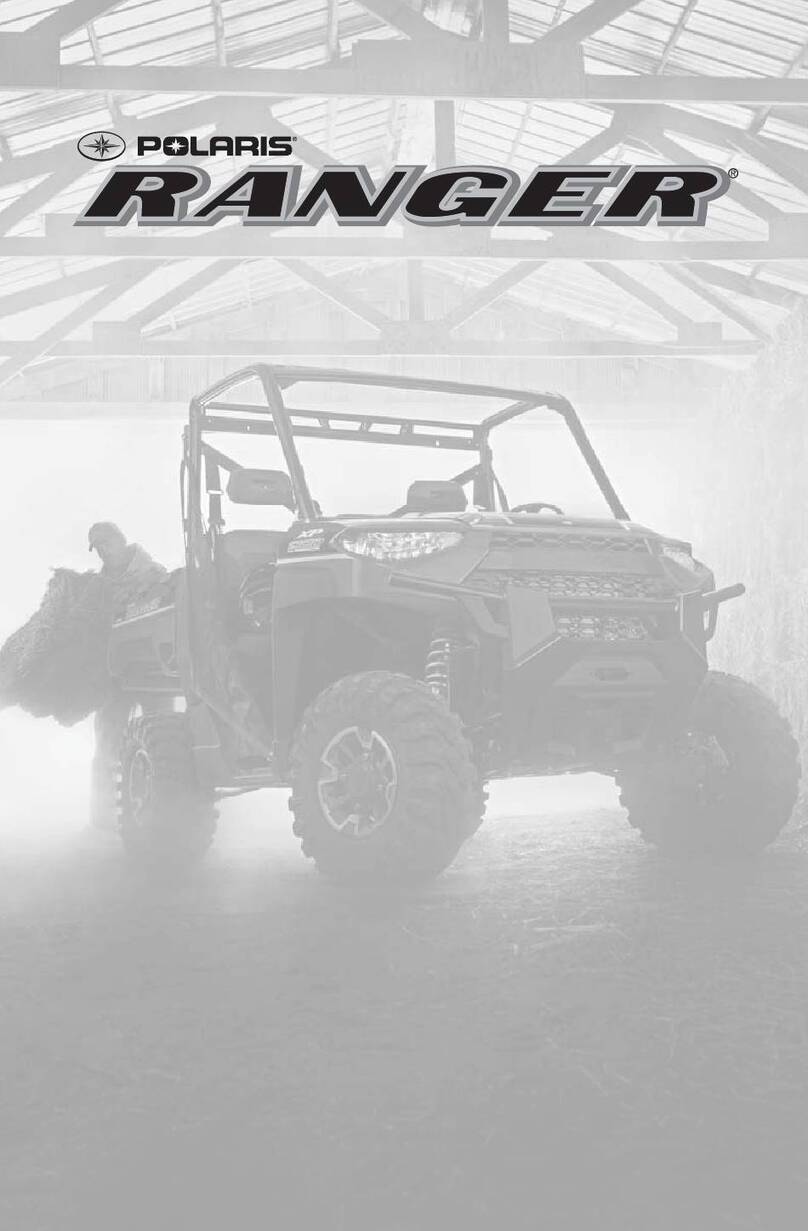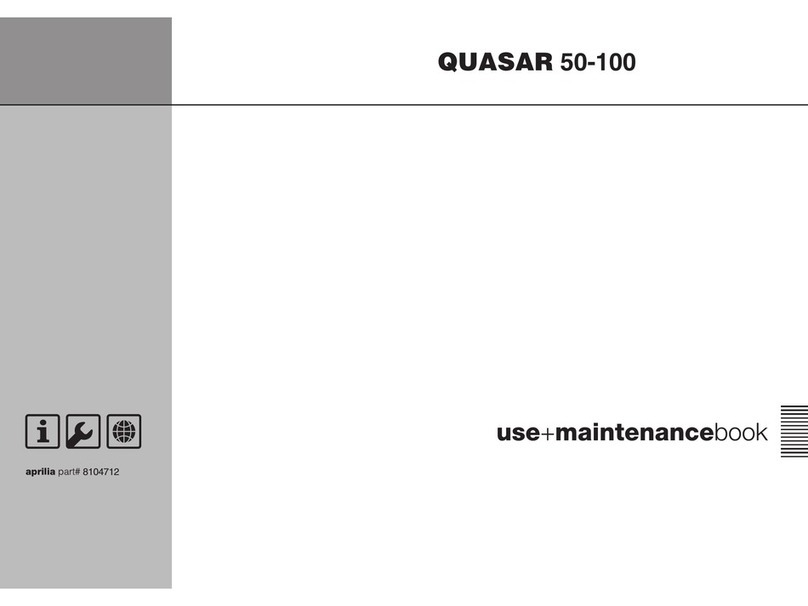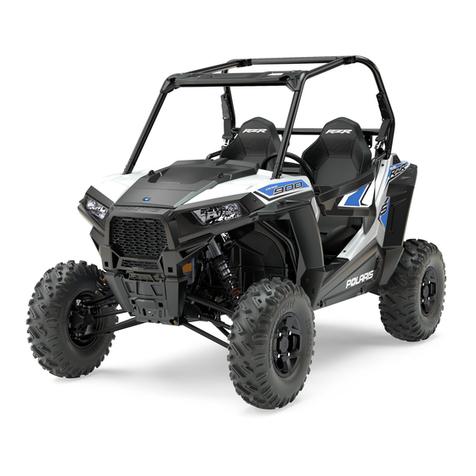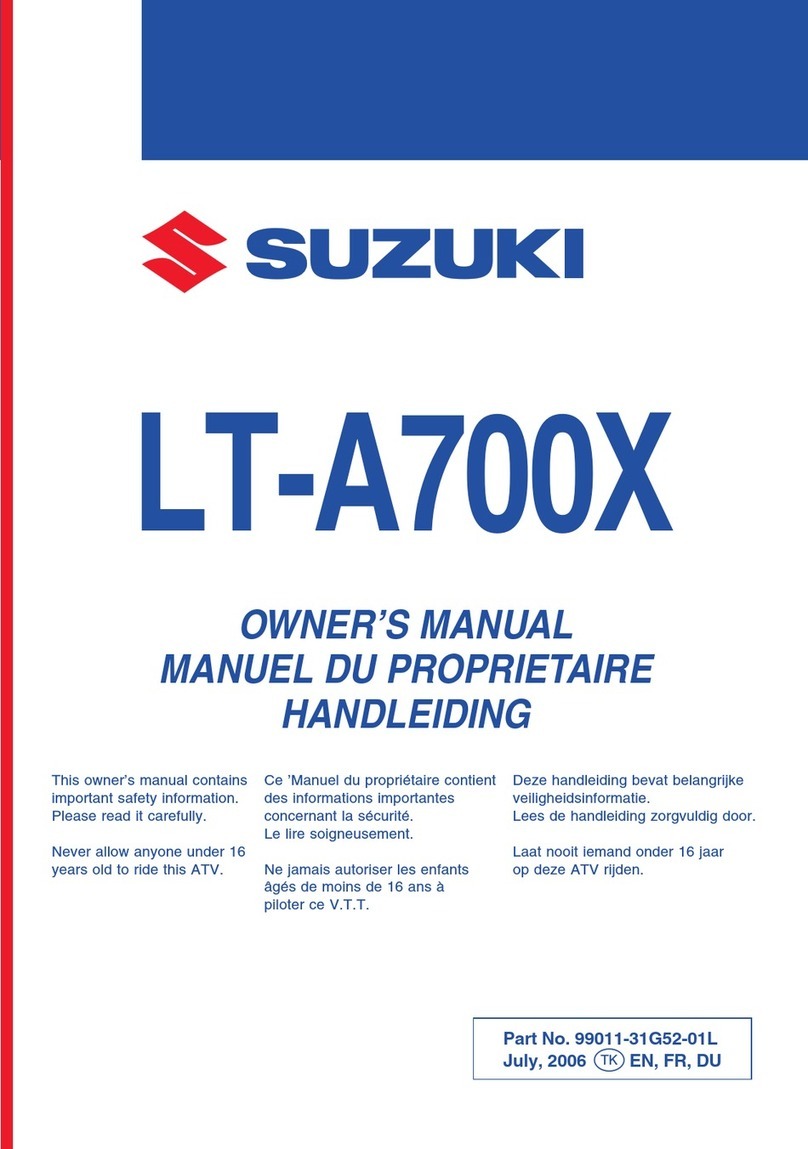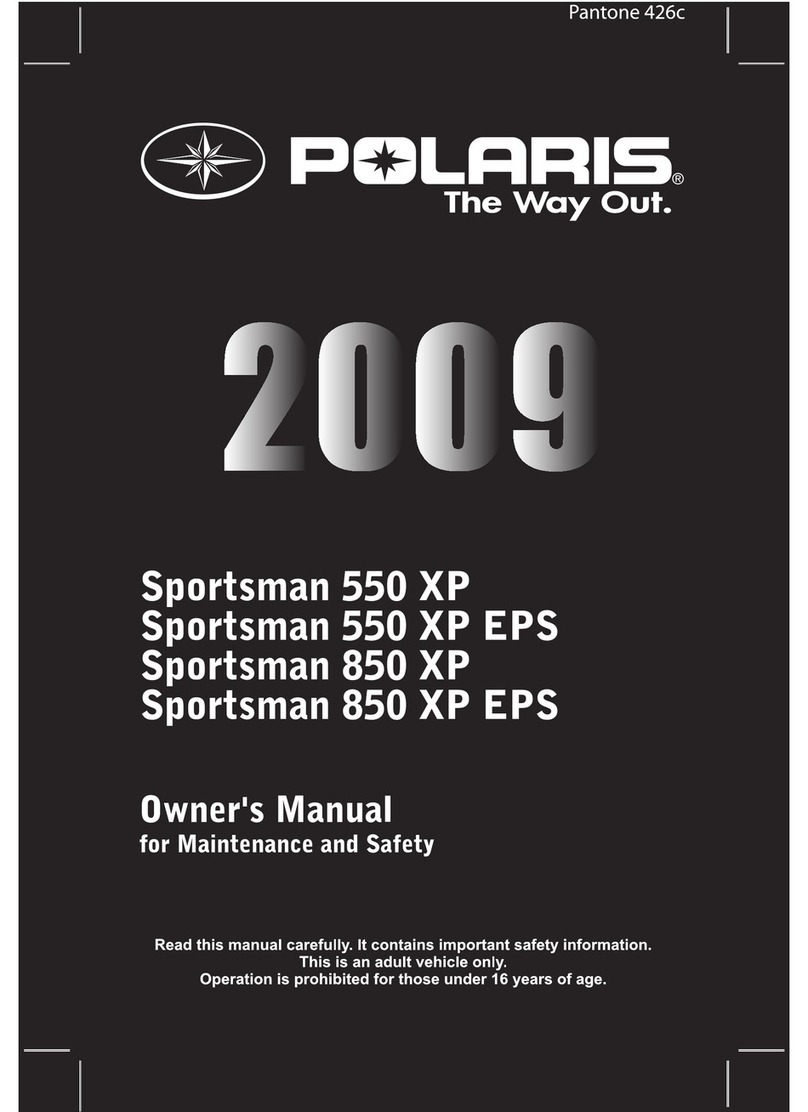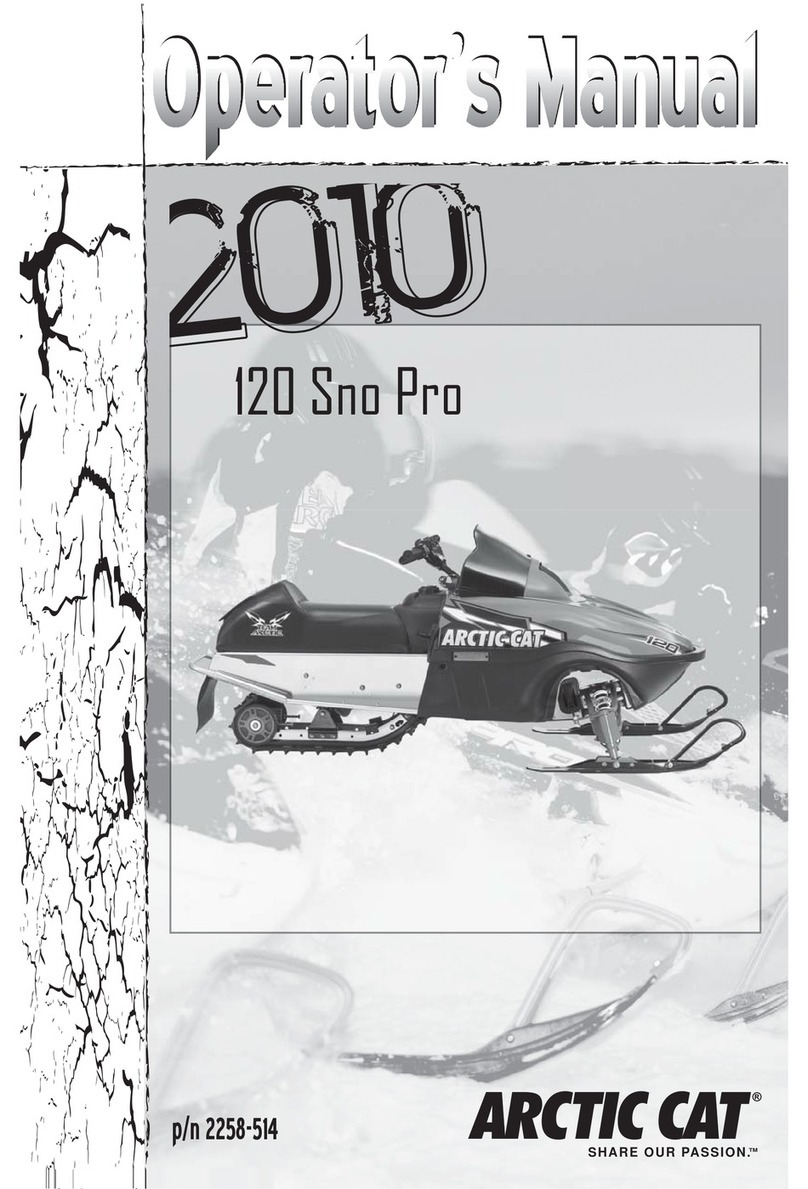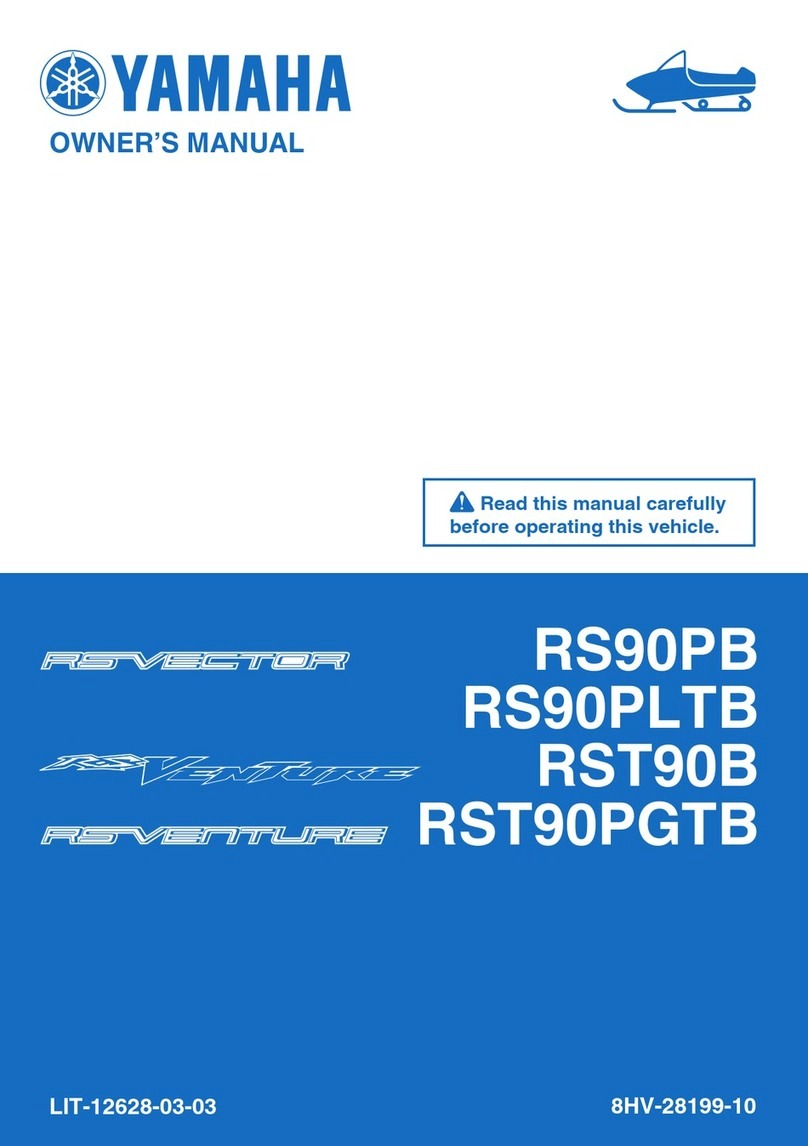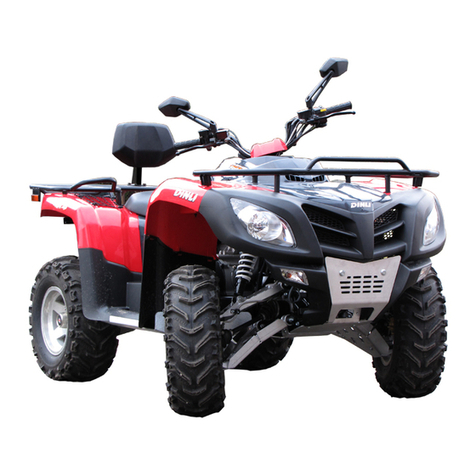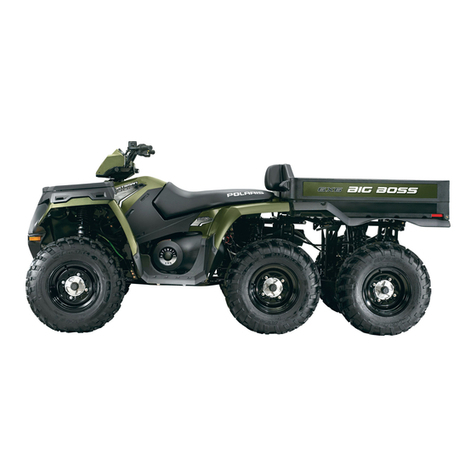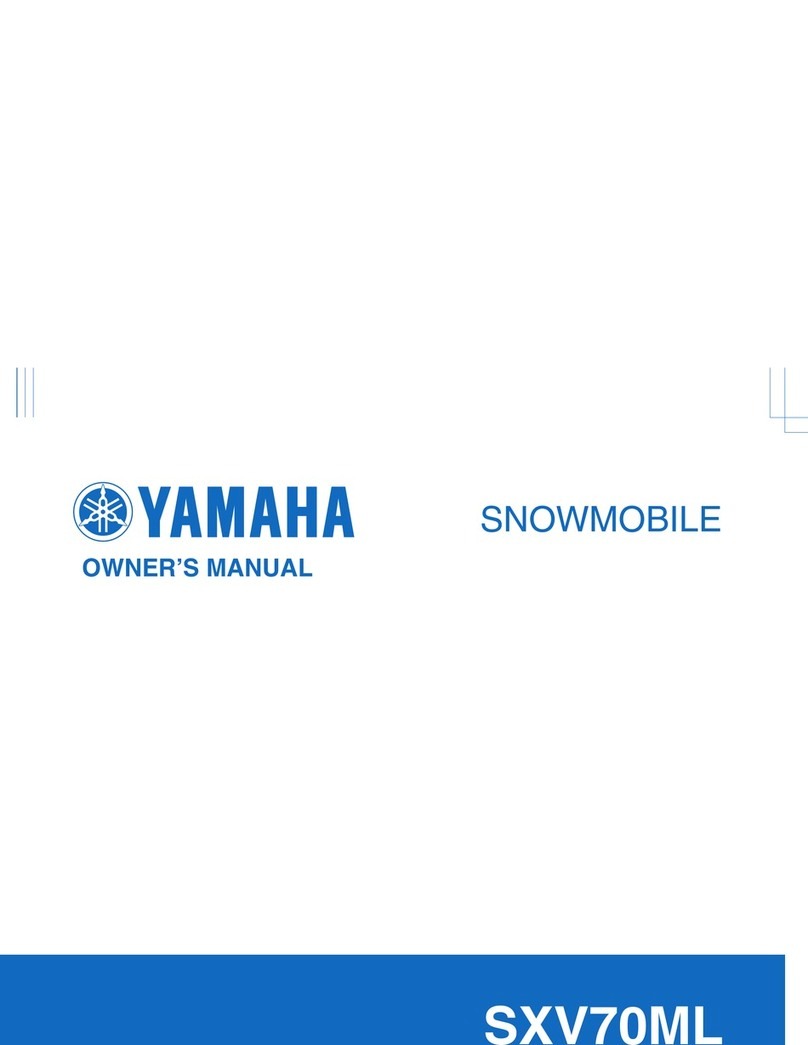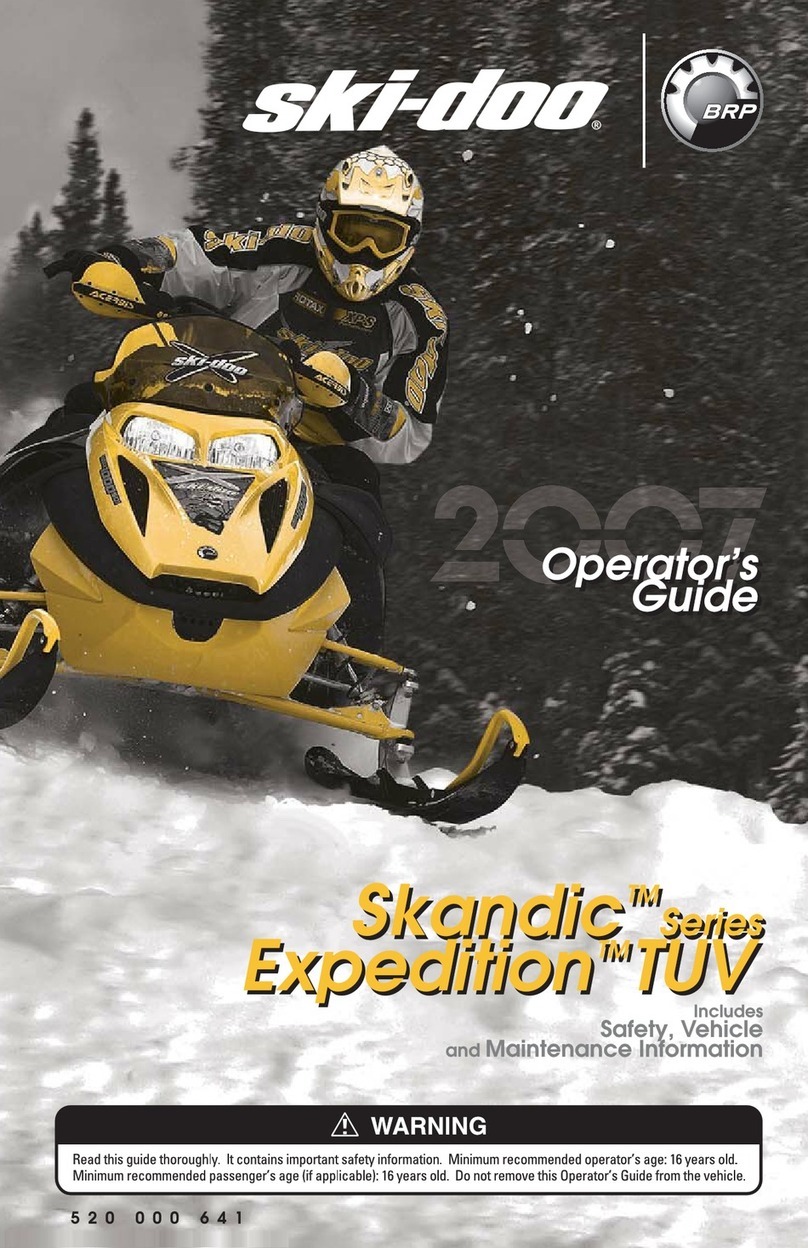All operators, including experienced UTV drivers or
passengers, should carefully read and fully
understand this Users Manual, and operate strictly
as the manual states in order to achieve the best
performance and avoid accidents. Everyone who
uses your UTV should be trained on how to
operate the UTV and be required to read this
manual before operation.
1. Safety Instructions:
1. Understand this UTV by reading this manual
and understanding all the components of the
vehicle. Only start and operate the vehicle
after you have finished reading this manual.
2. Pay close attention to the warning and caution
labels on the UTV.
3. Understand completely and learn to use the
safety devices (roll-over protective structure,
seat belts), and never change the original
safety devices. If the safety devices are
damaged, consult your local dealer for
replacement.Always use seat belts.
①Roll-over protective structure;
②Seat belts;
4. Do not wear loose articles of clothing during
operation, as these can be drawn into moving
parts on the vehicle and could cause a severe
injury to occur.
You should always wear protective equipment,
such as helmet, boots, eye protection, ear
protection, and gloves etc.
5. Only a qualified driver should operate this UTV.
Never operate after drinking, using drugs or
controlled substances, or while fatigued.
6. Always perform the pre-operation checks as
following:
(1)Check seat belts for wear or damage,
if necessary, replace it.
(2)Check brakes, throttle, brake pedal
and other mechanical parts for proper
operation. If you discover any
irregularities, replace related parts as
necessary. Periodically check the
fittings and fasteners.
(3)Check engine oil level and engine
coolant level.
(4)Check that the UTV is equipped to
handle the surroundings.
(5)Check and keep vehicle clean. Sludge,
grease and debris can cause a fire
and severe injury.
7. Passenger quantity and loading:
1) Only the driver and one passenger inside
cab. It is suggested that children under age
of 5 not be allowed as a passenger.
2) Single-row vehicle’s loading limit is 300KG.
Reduce loading weight according to road
condition. Never exceed the weight limits for
operation.
1) Never allow unauthorized persons to repair
this UTV. This may affect vehicle performance
and cause injury.


